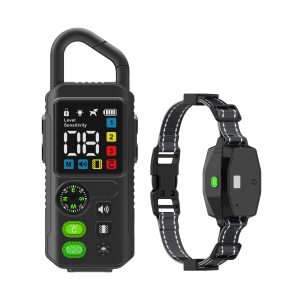I. Pet Fence Industry Overview
As an important component of the pet supplies market, the pet fence sector has experienced rapid growth in recent years alongside the booming global pet economy. With accelerating urbanization and increasing pet ownership rates, pet fences have evolved from simple containment tools to comprehensive pet lifestyle solutions integrating safety protection, behavior management, and smart monitoring capabilities.
II. Core Audience Analysis
1. Primary Consumer Groups
Urban young pet owners (25-35 years old): Prefer tech-savvy, convenient smart fence products
Middle-to-high income households: Value product quality and aesthetic design, willing to pay for premium features
Multi-pet households: Require spacious, expandable fencing solutions
Senior pet owners: Favor simple-to-operate, highly secure basic models
Pet breeding facilities: Need professional-grade, durable fencing systems
2. Consumer Behavior Characteristics
Purchase motivations:
Preventing pet damage to furniture (42%)
Training pet behavior (35%)
Ensuring pet safety (58%)
Home space division management (27%)
Decision factors:
Product safety (91%)
Price reasonableness (76%)
Ease of installation (68%)
Appearance design (53%)
Brand reputation (47%)
Purchase channels:
E-commerce platforms (68%)
Pet specialty stores (22%)
Home goods stores (7%)
Others (3%)
III. Future Development Trends
1. Smart Technology Integration
IoT technology adoption: Smart fence market projected to reach $1.2 billion by 2025
Functional evolution directions:
Automatic sensor activation
Remote APP control
Pet behavior monitoring
Health data collection
Smart alarm systems
2. Material and Design Innovation
Eco-friendly materials: 35% expected increase in use of recyclable plastics and bamboo fiber composites
Modular designs: 70% of mid-to-high end products projected to adopt freely combinable modular structures by 2026
Aesthetic integration: 40% demand growth for minimalist designs coordinating with home decor styles
3. Multi-functional Integration
Combined feeding systems
Built-in temperature control
Added entertainment features
Disinfection and cleaning systems
4. Personalized Customization Services
Size customization
Functional module selection
Appearance personalization
Smart system configuration
IV. Market Challenges and Opportunities
Challenges:
Intensifying product homogenization
Technological barriers for smart products
Consumer price sensitivity
Increasing demands for installation/user convenience
Opportunities:
Silver economy driving demand for senior-friendly products
Pet humanization trend creating premium markets
Integration opportunities with smart home ecosystems
Rapid growth in emerging markets
V. Strategic Recommendations
Differentiated positioning: Develop dedicated product lines for segmented demographics
Technology empowerment: Strengthen strategic partnerships with IoT companies
Service extension: Build “product + service” business models
Channel innovation: Develop integrated online-offline experiential marketing
Sustainable development: Promote green product R&D and circular economy models
VI. Conclusion
The pet fence industry is undergoing transformation from functional products to smart systems, and from single products to comprehensive solutions. Over the next five years, companies that accurately grasp evolving consumer needs, maintain technological innovation, and provide complete pet lifestyle services will gain competitive advantages. The industry shows tremendous growth potential, with the global market size projected to reach $4.5 billion by 2028, maintaining an 8.5% CAGR.




